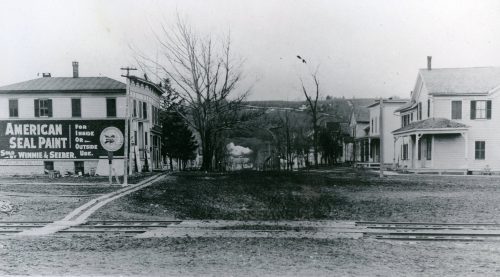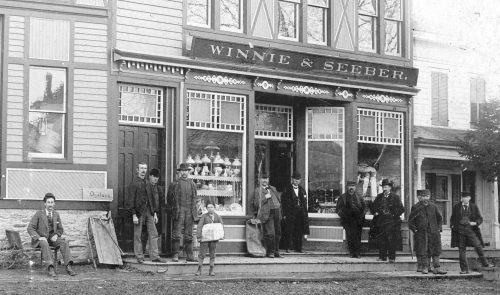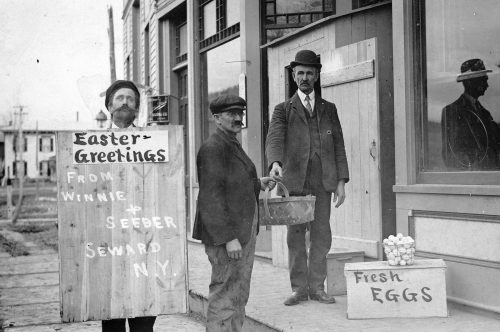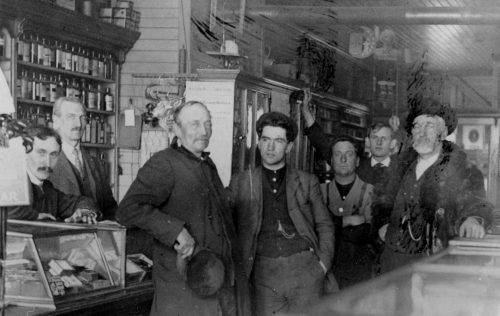The Town of Seward and Its Hamlets
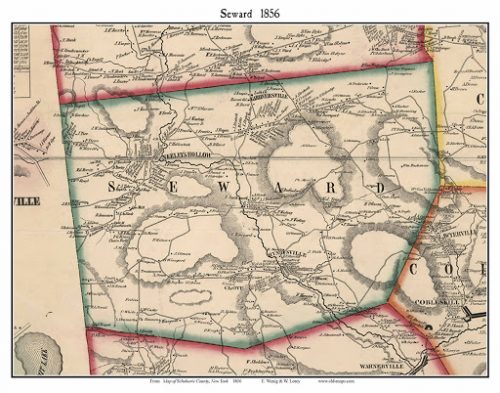 Written by former Seward Town Historian Beryl Warner
Written by former Seward Town Historian Beryl Warner
Published in the Fall/Winter 1987 Schoharie County Historical Review
The first settlement of the town of Seward was made in 1754 by a colony of Germans of the Palatine order known as New Dorlach. Upon formation of Otsego County on February 16, 1791 all of Seward, Sharon, and a portion of Carlisle formed the town of New Dorlach. It was so named because of the wishes of the first settlers who immigrated from Dorlach, Germany. Later the town of Seward, as it is today, was formed from Sharon on February 11, 1840 and was named in honor of William H. Seward who was governor of New York State at the time. The town consists of 20,106 acres of land and in the late 1800s there were twelve school districts. Over the years there have bene thirteen churches, mostly Lutheran and Methodist. Westkill or West Creek is the principal stream and flows southeast through the center of the town.
The first meeting house was built in 1760 and served all the families in the area under the leadership of Peter N. Sommer. Undoubtedly the religious services before this were held in the home with only the family taking part. Gradually, as the settlement grew, families combined their services and then when there were too many for the homes, the different churches were built. The town of Seward perhaps had the first band, organized in 1868, that gamed any fame in Schoharie County.
Within the town of Seward were the hamlets of Gardnersville, Hyndsville, Janesville, Dorloo, and Seward.
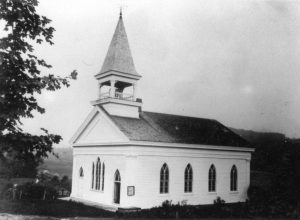
Gardnersville was named after Dow B. Gardner who was the first postmaster in 1825. One of the most remembered families of Gardnersville was believed to be the Chrysler family who, during the American Revolution, turned Tory and joined with the British and their Mohawk allies in raids throughout the town and county in 1780. Gardnersville also had a cheese factory, the Letts saw mill, a Lutheran Church, a one-room school, a store and two blacksmith shops.
Hyndsville was known as Hoffman’s Mills in the early days. This hamlet’s name was changed to Hyndsville at the time “Squire” Hynds was postmaster in 1836. There was quite some industry aroundthe little hamlet with three hotels, three stores, a school, a Methodist Church, an undertaker, a cooper shop, tin smith, two wagon shops, two blacksmiths, the Brown Bros. Grist & Saw Mills, harness hops, a milliner and a flagstone quarry.
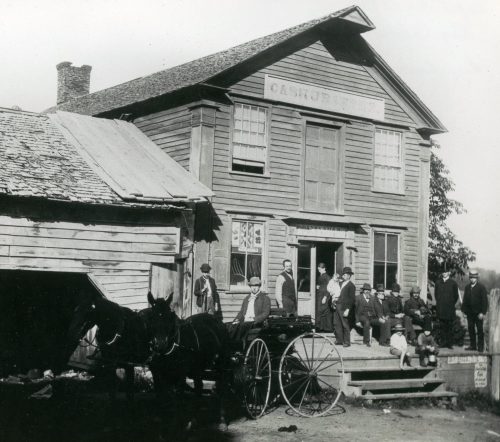
Hyndsville was also known for “Calkins Wonder” built in the late 19th century by Henry Calkins, which consisted of mechanized figures of men and women doing rural chores of that period. These figures were mounted on a platform built into a wagon (so it could be easily transported) and underneath the platform was a system of pulleys which, when powered by water, made each figure move simultaneously. These figures demonstrated such chores as chopping wood, cutting hay and churning butter.
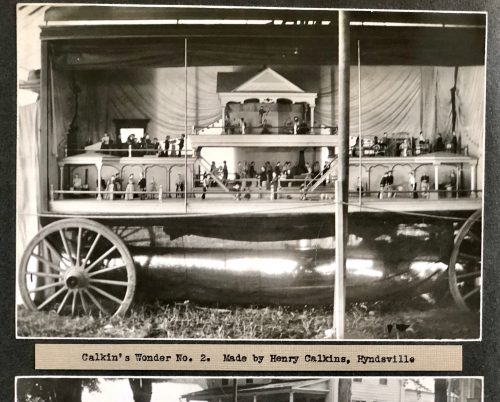
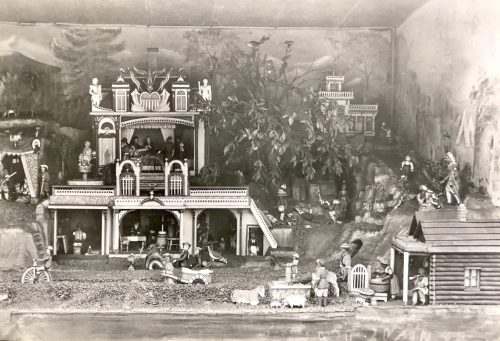
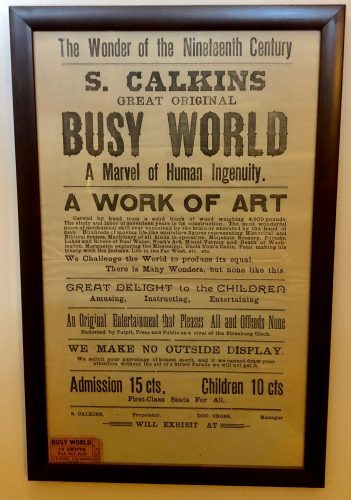
The entire hamlet of Hyndsville was threatened by fire in the early 1930s when the Brown Bros. Mills burned.
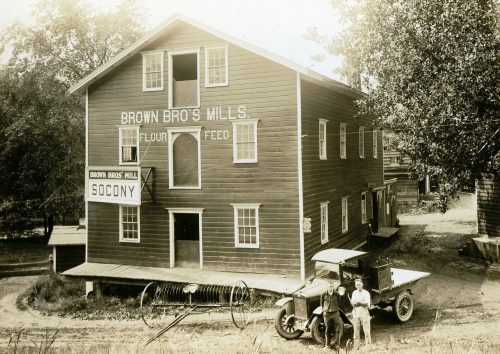
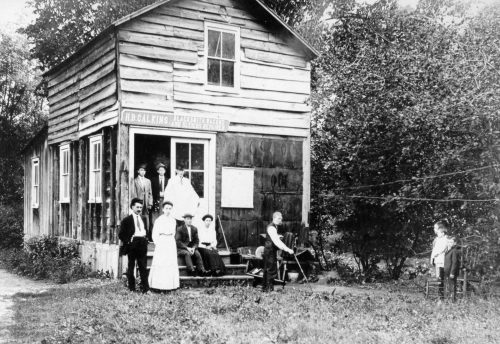 Janesville was formerly known as Seward Center and contained the Rice Grist & Saw Mills (1800) and also the oldest Methodist Church in the area, known as “Mother Church”, located near the Seward Center Cemetery. First edifice was a log structure (1760) a short distance from the last site where both Lutheran and Reformed held services. Second church was the large wooden building around 1834 on the same site near the cemetery. There was also a school and several mechanic shops in this hamlet at one time.
Janesville was formerly known as Seward Center and contained the Rice Grist & Saw Mills (1800) and also the oldest Methodist Church in the area, known as “Mother Church”, located near the Seward Center Cemetery. First edifice was a log structure (1760) a short distance from the last site where both Lutheran and Reformed held services. Second church was the large wooden building around 1834 on the same site near the cemetery. There was also a school and several mechanic shops in this hamlet at one time.
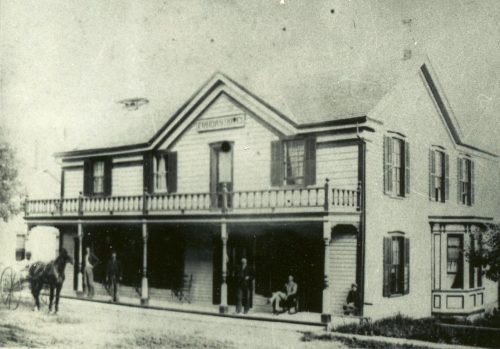
Dorloo, previously Seward Valley, was originally known as Neely’s Hollow, named after one of the first settler, Matthew Neeley, who came to the hamlet in the early 1800s from Florida, NY. He was a Baptist preacher and blacksmith and founded the first Baptist Church there. He also kept the first store. Besides the Baptist Church there was a two-room school, a hotel, a Methodist Church, three blacksmiths, a wagon shop, a cabinet shop, a shoe shop, cooper, foundry, brick yard, the Abrams Saw Mill and the Southworth Grist Mill.
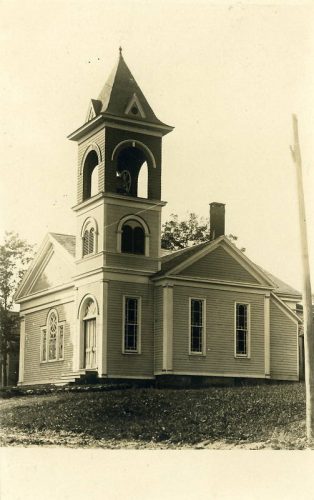
A post office was established in 1898 under the name of Dorlach and in 1900 the name was changed to Dorloo by the first postmaster, Noah S. Wright. This hamlet was known for the Seward Valley Race Track where there was much activity in the late 1800s and early 1900s. Besides horse racing on the half-mile track, there were all-day celebrations consisting of band music, ball games and balloon ascensions, usually lasting two or three days in August and about three weeks before hop picking with hundreds of people attending.
Seward was previously called Seward Station and was the last hamlet to be settled. The hamlet began to grow when the D & H Railroad came through in 1870. At this time Clark B. Griggs, one of the early pioneers, lost no time in erecting a hotel and store combined. Mr. Griggs was also first postmaster.
Mr. Gilbert G. France, likewise, was very influential in the development of Seward Station having donated the Gilbert G. France Picnic Grove. Around 1889 annual picnics, sponsored by the Seward Town Sunday School Association were held here. Huge crowds would travel in horse-drawn vehicles over dusty roads, usually in August and many traveling several miles to attend. In addition to the picnic dinner, there was usually music provided by a hometown band, professional musical entertainers from out of town, speakers and games. The climax of these events was reached in approximately 1897 when motor transportation replaced the horse and buggy. In this hamlet there was also a power plant, telephone switchboard, two hotels, two stores, cheese factory, feed store, creamery, school, Lutheran Church, blacksmith shop, Beekman Grist and Saw Mill and more.
In addition to the above mentioned hamlets, the town of Seward contained a dish-like valley called Clove, which was first settled by the Germans. Undoubtedly however, Isaac Vroman (Low Dutch) who surveyed the Dorlach Patent gave the valley the Low Dutch name “Clauver Kloof”, meaning Clover Valley, due to the wild clover growing there. Later, Clauver was dropped and it was known as “The Kloof”, which in English means “The Clove”. In the 1870s there was a brewery, a cooper shop, a school and about a dozen dwellings in the Clove.
The coming of the Delaware & Hudson Railroad brought about many changes in the little hamlets of Janesville, Gardnersville and Dorloo because it did not pass near these places and a decline of business was keenly felt. Before 1870 they could all well boast of several small businesses vital to small communities at the time.
However, the railroad did pass through Seward and Hyndsville and as the town of Seward was an agricultural center, there began to be a great demand for incoming and outgoing freight, such as hops poles, baled hay, thousands of bales of hops, etc. Prior to 1900 the town of Seward was noted for its hops growing but disease and blue mold affecting the hops led residents to turn to dairying. Therefore, milk was shipped in refrigerated cars as well as picked up in cans on platforms at different points. Livestock was also shipped and later on – coal.
The railroad carried many passenger trains until 1931. The mail service, twice daily in either direction, was a great service to the entire community. Last run of the Cherry Valley Branch of the Delaware & Hudson Railroad was in August 1956.
“We do not know of a township that is more conveniently located, more picturesque in appearance or is more productive than the town of Seward.” -William Roscoe in “History of Schoharie County”
